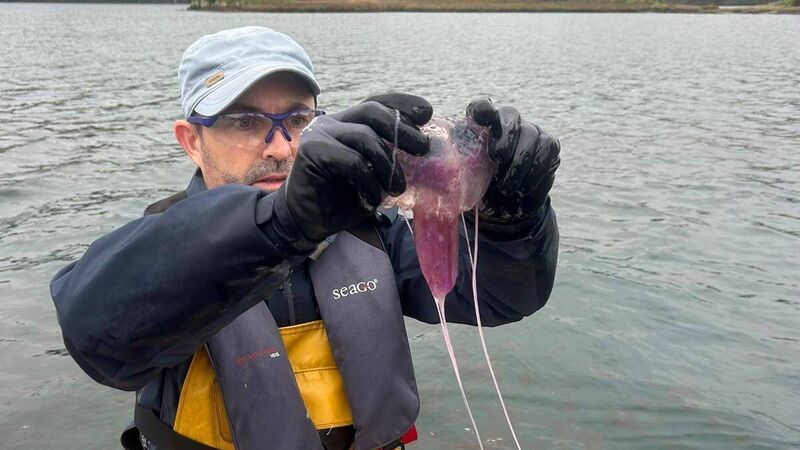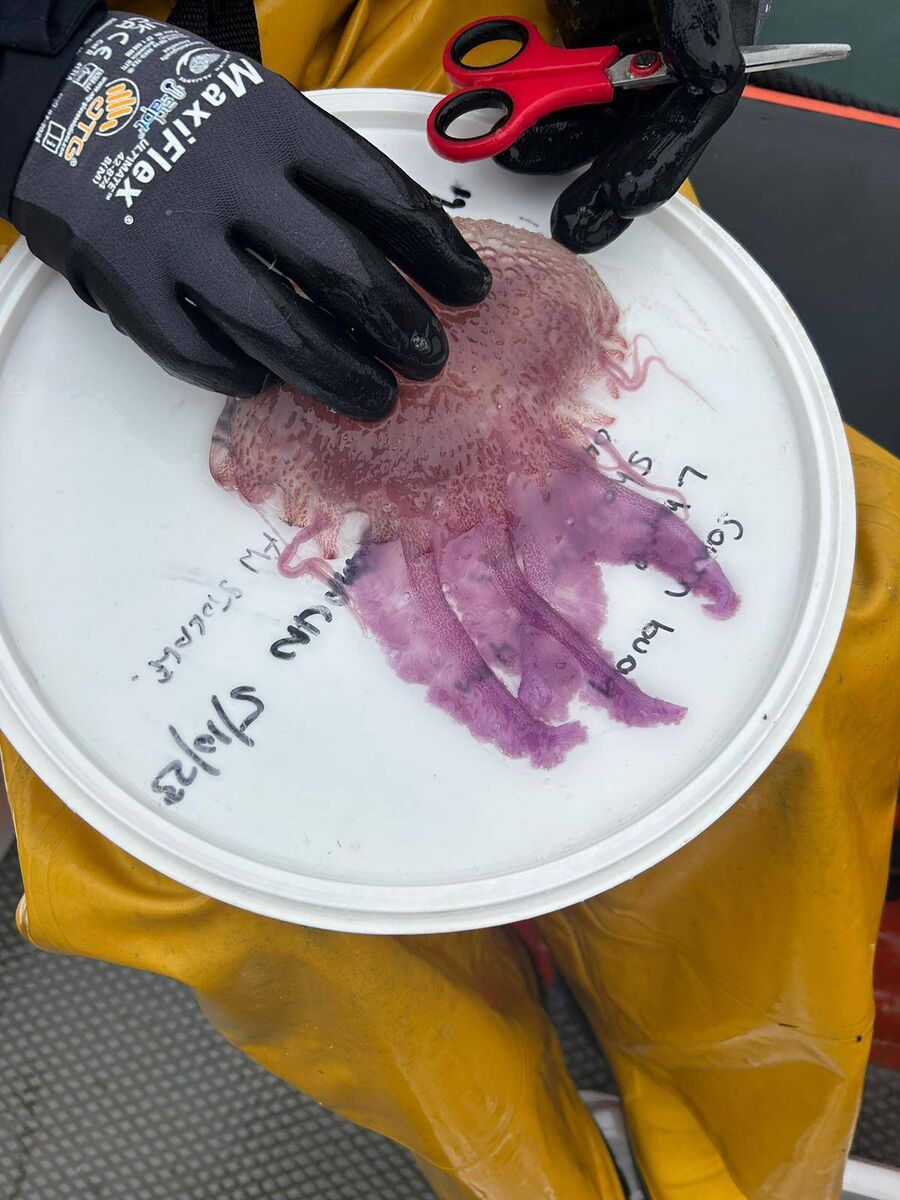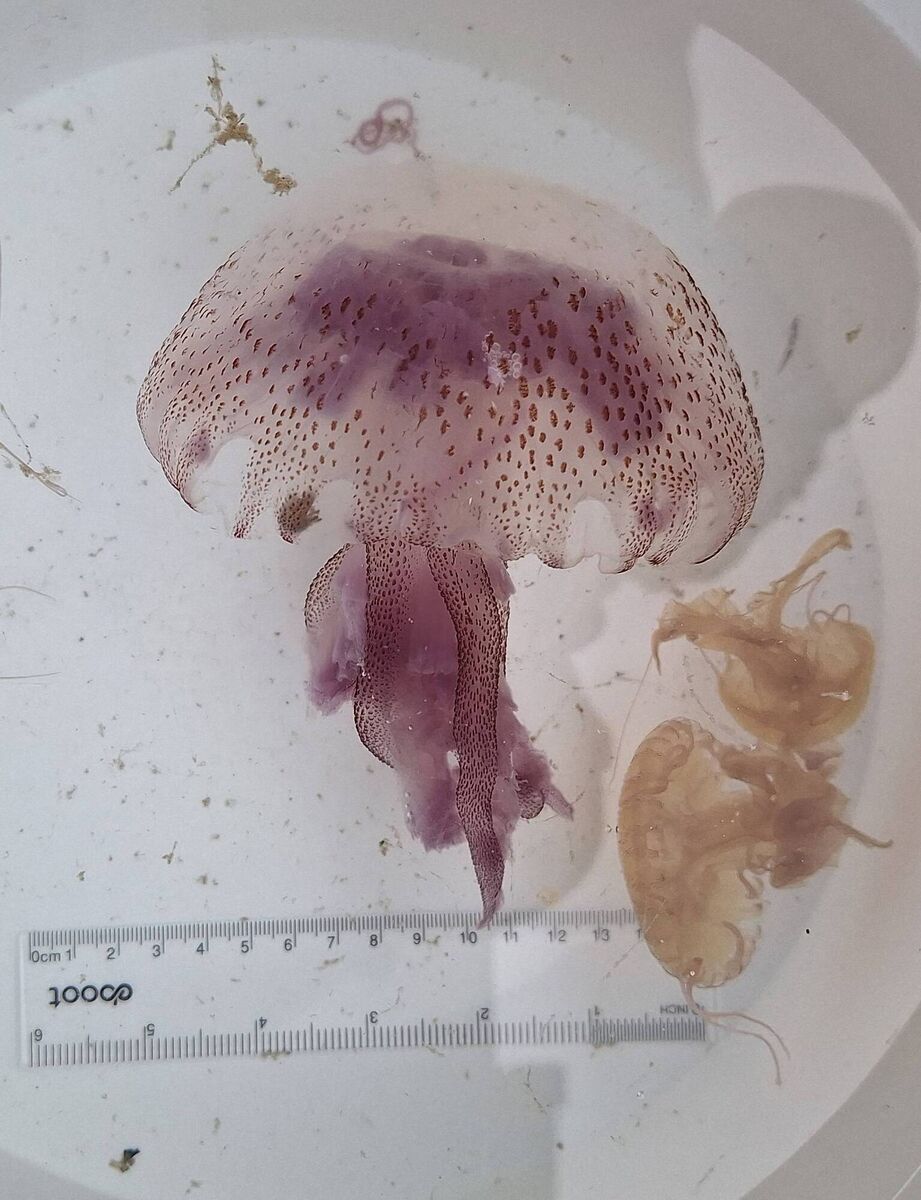Watch: Hundreds of thousands of mauve stinger jellyfish discovered at Cork lake

Dr Tom Doyle holding mauve stinger jellyfish at Lough Hyne in Cork. Picture: Dr Tom Hynes
In a very rare and unusual occurrence, hundreds of thousands of mauve stinger jellyfish have been spotted at a lake in Co Cork.
The jellyfish were first discovered in Lough Hyne, Ireland’s only saltwater lake, last Tuesday, and have delighted local zoologists since their arrival.
The mauve stinger is one of six true jellyfish that occurs in Irish waters, but it is “probably the least understood.” It is an oceanic species and therefore less familiar on Irish shores.
“In all the times we’ve been down to Lough Hyne, it is very rare to see any jellyfish, let alone thousands of mauve stinger,” said senior zoology lecturer at University College Cork, Dr Tom Doyle.
Dr Doyle has been studying the species for 11 years with the Marine Institute, and while the mauve stinger has been “extremely abundant” at sea in eight out of those 11 years, it is very unusual to see them in Lough Hyne.
According to Dr Doyle, “lots of different things had to happen” in order for the mauve stinger to get carried into the lough.
Firstly, the species had to be really abundant again this year, and secondly, it needed a weak slope current.
A slope current is a deep-sea current which runs along the shelf edge of Ireland.
It usually has a blocking mechanism which stops these jellyfish spilling into shallow seas, but when the slope current is weaker, it allows some oceanic species to be swept in shore.
And south easterly winds and a high tide were also necessary.
“These are all conditions that we’ve had in the last two weeks, so it does match up with our research,” said Dr Doyle.

The big question now is whether the mauve stingers will survive in the lough over the winter.
“We don’t know the answer to that, but there’s every possibility that they will. They are a real survivor.
“They can live in deep waters, they can tolerate low oxygen, and they can shrink if there’s not enough food,” said Dr Doyle.
While Dr Doyle believes that their arrival provides “a unique opportunity” to study an oceanic species, he is unsure what their impact may be.
“The lough never, or very rarely has any jellyfish, so to suddenly have tens of thousands of them, will definitely effect the food web.
“It could have very negative impacts on the ecosystem,” he said.

Lough Hyne is most famous for its sea sparkle, which is caused by bioluminescent plankton, also known as noctiluca scintillans.
It is not yet clear whether the mauve stinger will feed on the noctiluca scintillans, but Dr Doyle believes it could be inevitable.
“There are now so many jellyfish, and if they can catch the noctiluca, then they will deplete, it” explained Dr Doyle.
Juvenile mauve stinger are golden brown in colour, while adults are a beautiful pink, but reactions to their sting can be “pretty bad.”
For some, it is more of a nettle sting or a rash, but for others, it can cause lesions and localised pain which can persist for 1-2 weeks. Others may be left with a scar.
While Dr Doyle has strongly advised members of the public not to go swimming in Lough Hyne, he said if you’re curious about nature, it is a “fascinating phenomenon” to see.
In order to track the mauve stinger jellyfish, Dr Doyle is now asking members of the public to report sightings on the Big Jellyfish Hunt Facebook page.














